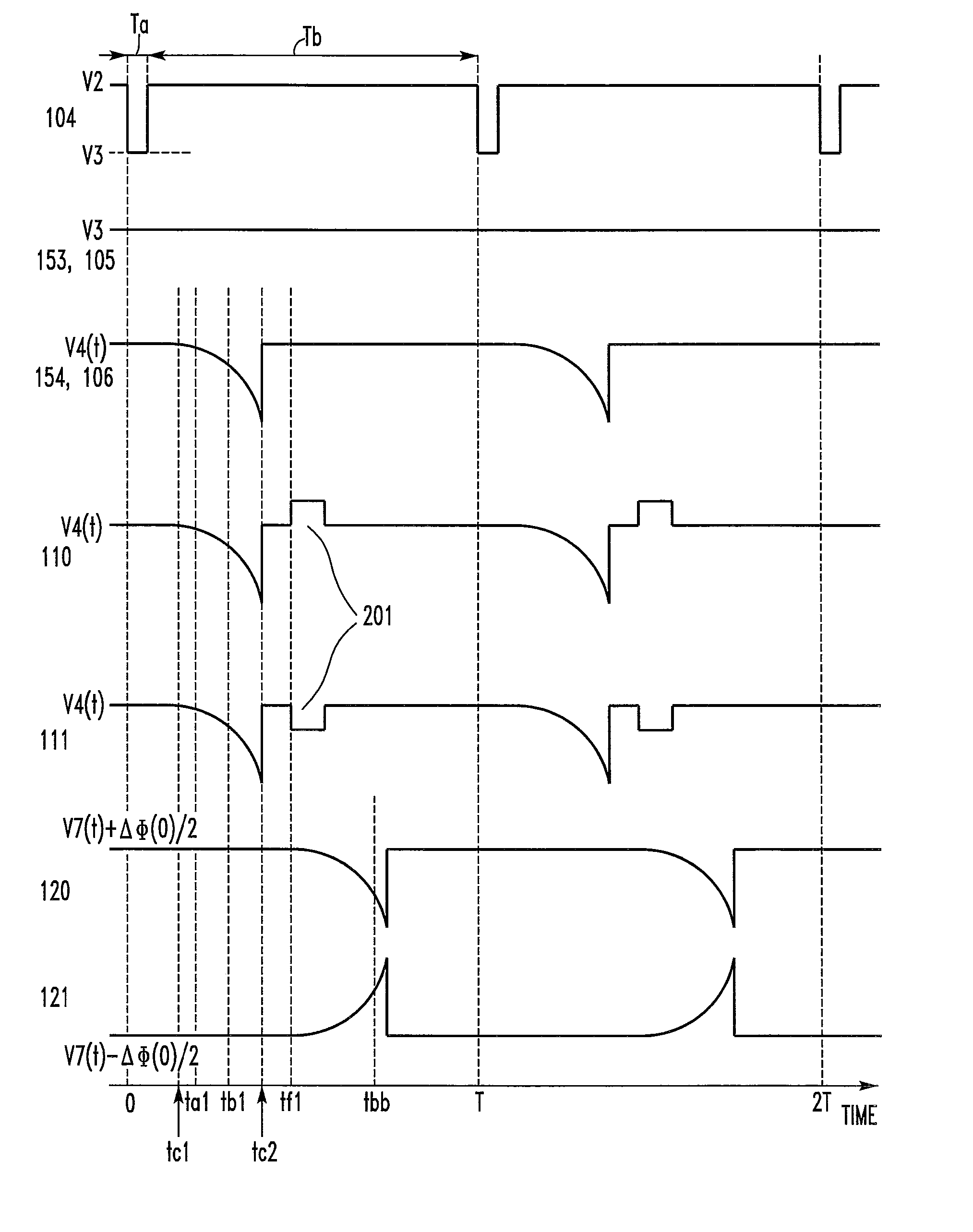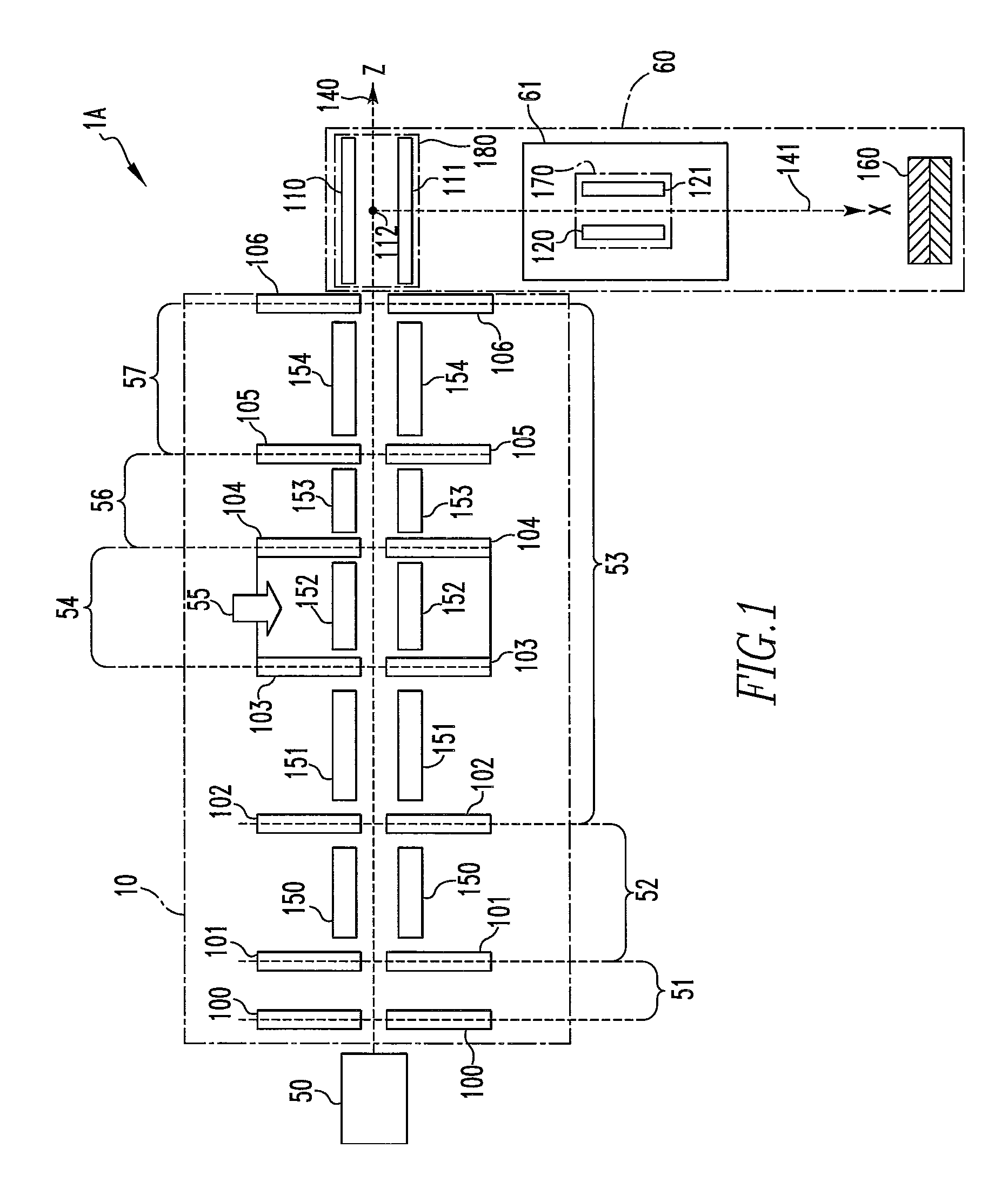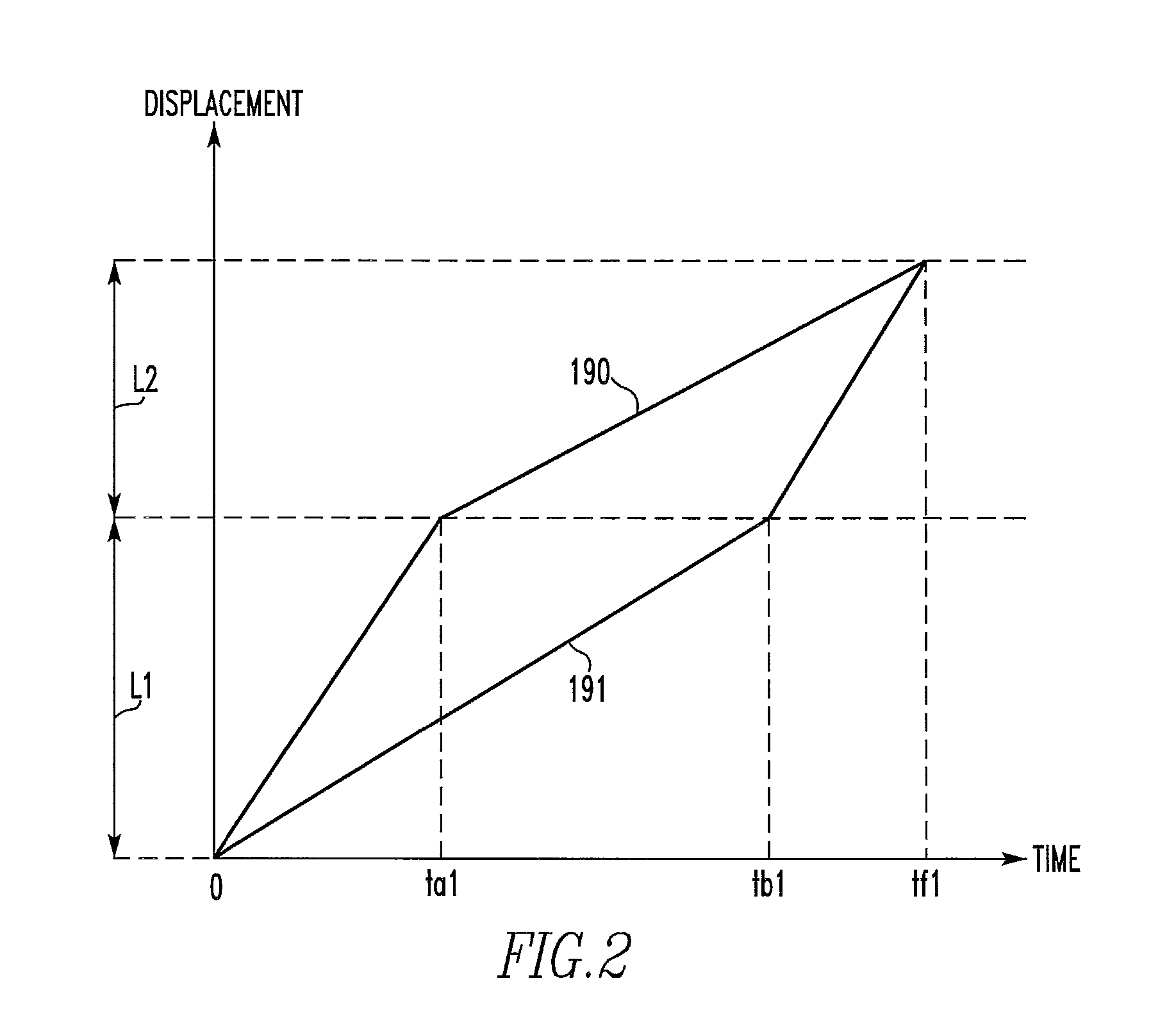Orthogonal acceleration time-of-flight spectrometer having steady potential and variable potential transport regions
a time-of-flight spectrometer and steady potential technology, applied in mass spectrometers, stability-of-path spectrometers, separation processes, etc., can solve the problems of low efficiency of ion utilization, ion loss, and inability to detect ion streams not accelerated by detectors, so as to achieve efficient estimation of the structure of precursor ions
- Summary
- Abstract
- Description
- Claims
- Application Information
AI Technical Summary
Benefits of technology
Problems solved by technology
Method used
Image
Examples
first embodiment
1. First Embodiment
[0040](1) Structure
[0041]The structure of a time-of-flight (TOF) mass spectrometer according to a first embodiment of the present invention is first described. FIG. 1, which is a schematic vertical cross section of the TOF mass spectrometer, shows the structure of the spectrometer of the first embodiment.
[0042]Referring to FIG. 1, a time-of-flight (TOF) mass spectrometer according to the first embodiment of the invention is generally indicated by reference numeral 1A and configured including an ion transport region 10 and a TOF mass analyzer 60. The spectrometer 1A may also be configured including an ion source 50.
[0043]The ion source 50 ionizes samples by a given method. For example, the ion source 50 can be realized as an atmospheric-pressure continuous ion source that continuously creates ions by an atmospheric-pressure ionization (API) method such as ESI.
[0044]The ion transport region 10 includes a skimmer electrode 100 and another electrode 101 located behind...
second embodiment
2. Second Embodiment
[0096](1) Structure
[0097]FIG. 4 is a schematic vertical cross section of a time-of-flight (TOF) mass spectrometer according to a second embodiment of the invention, showing the structure of the spectrometer. In both FIGS. 1 and 4, like components are indicated by like reference numerals.
[0098]As shown in FIG. 4, the TOF mass spectrometer according to the second embodiment is generally indicated by reference numeral 1B and similar to the TOF mass spectrometer 1A according to the first embodiment except that the deflector 170 is omitted. Therefore, description of the structure of the spectrometer 1B is omitted. The difference of the spectrometer 1B with the spectrometer 1A is that the axial voltage in the multipole ion guide 153 and the voltages applied on the electrode 106, the pushout electrode 110 of the orthogonal acceleration region 180, and the extraction electrode 111 are different as described below.
[0099](2) Operation
[0100]In the following description, it ...
third embodiment
3. Third Embodiment
[0130](1) Structure
[0131]FIG. 7 is a schematic vertical cross section of a time-of-flight (TOF) mass spectrometer according to a third embodiment of the invention, showing the structure of the spectrometer. In FIGS. 1 and 7, like components are indicated by like reference numerals.
[0132]As shown in FIG. 7, the TOF mass spectrometer according to the third embodiment is generally indicated by 1C and similar to the TOF mass spectrometer 1A according to the first embodiment except that the electrode 102 and quadrupole mass filter 151 are omitted and that the collision cell 54 has been replaced by an ion storage device or region 58.
[0133]The ion storage device 58 is identical in structure with the collision cell 54 of the TOF mass spectrometer 1A. The storage device 58 acts as the ion storage region of the present invention.
[0134]In this way, the TOF mass spectrometer 1C is built as an orthogonal acceleration TOF mass spectrometer (oa-TOFMS). The spectrometer 1C is sim...
PUM
 Login to View More
Login to View More Abstract
Description
Claims
Application Information
 Login to View More
Login to View More - R&D
- Intellectual Property
- Life Sciences
- Materials
- Tech Scout
- Unparalleled Data Quality
- Higher Quality Content
- 60% Fewer Hallucinations
Browse by: Latest US Patents, China's latest patents, Technical Efficacy Thesaurus, Application Domain, Technology Topic, Popular Technical Reports.
© 2025 PatSnap. All rights reserved.Legal|Privacy policy|Modern Slavery Act Transparency Statement|Sitemap|About US| Contact US: help@patsnap.com



